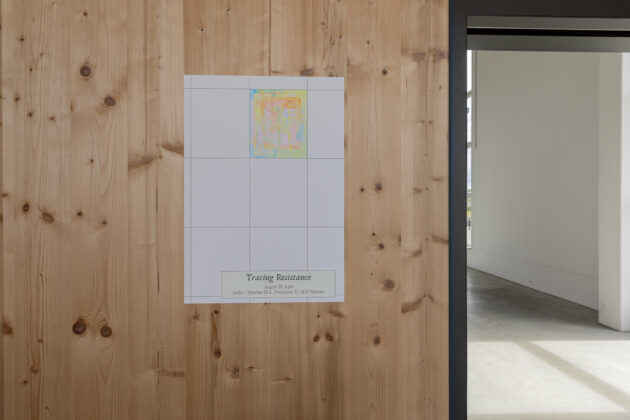Tracing Resistance
Tracing Resistance is an archive conceptualized as a Gesamtkunstwerk. It consists of a three-dimensional quilt blanket, sound installation, and the units of the archive, that reorganize and revisit Savelyeva’s artworks and collections over the years. The archive serves as a speculative device of the herstories of resistance, working through the tensions between public and private, fictional and historical, and exploring different forms of dissent.
Chosen for its links with cultural heritage and the history of protests, the quilt as a host for the elements of this archive deliminates and challenges the classic notion of an archive.

The poetic narratives of the artworks and objects, which form the central corpus of the work, weave together memories, projections, traces of time, and fantasies and place them on a non-hierarchical striated surface. In this speculative archive the objets trouvés, traced surfaces, and imprints serve as impulses and semi-fictional witnesses for writing alternative herstories.
The viewers are invited to take off their shoes and position themselves on the blanket of the archive.

The singular works that are placed on the landscape archive–quilt–enter a new dialogue, building some unexpected relations, and forming different narratives. Moscow Conceptualists (in particular Il’ya Kabakov, Dmitri Prigov, and to some extent a precursor of conceptualism Ian Satunovski) appear as important interlocutors in this archive. However, it’s equally essential to look beyond this context and examine how the reference to this tradition opens up for Savelyeva new approaches and themes. Memory. Homage to Dmitri Prigov thematically stands closest to the collection of photographs from the Umbrella Revolution in Hong Kong (2014), tracing back the positions of protesting and marching bodies in the city landscapes. StillLife (2020) is related to The Attic or Kabakov’s studio (2015-2017) by the mode of fictionalizing events and speculative narration that lay in the core of the work.

Here we see how the domestic and the public blend together, surrounded by resistance, rumors, and even gossip of ordinary people and representatives of power (in the case of StillLife, representatives of law enforcement who put themselves beyond the law). The scale of observing the power oppression rises from criticism of the arbitrary behavior of local policemen to a state (and beyond) level in the case of Edit Wars (2022-2023). The digital project analyzed the instruments and tools of propaganda narratives. The work is present in the archive in the form of a trace–an embroidered cloth, containing the description of the project. The topic of power, and in this case soft power, reappears in Memory (2020), which employs the practice of exchanging artifacts (e.g. faceless Matryoshka doll) as a method for the speculation about soft forms of power. Finally, a series of postcards, Inside Two Spaces (2023) explore graphically the phenomenological notions of striated and smooth spaces, leaning on one of the central dichotomies introduced by Deleuze and Guattari regarding warfare and war-machine as opposed to, but at the same time adjacent to the the state apparatus.








All photos by Jiye Lee
Text by Maru Mushtrieva

